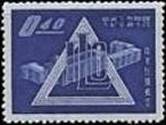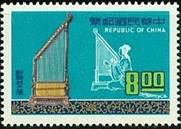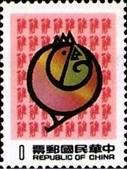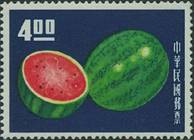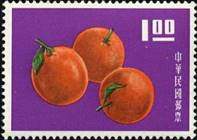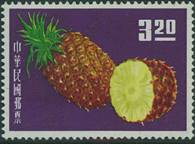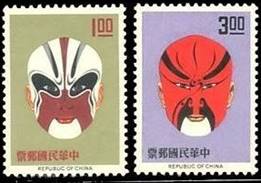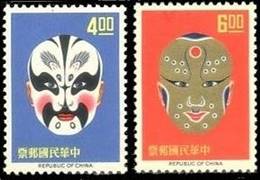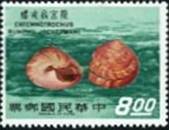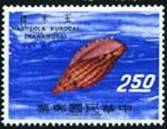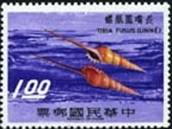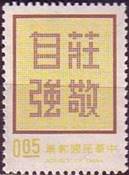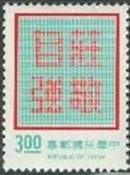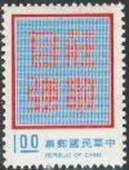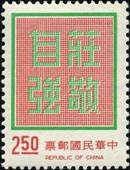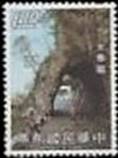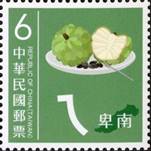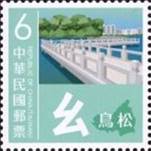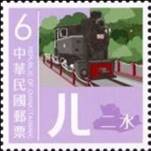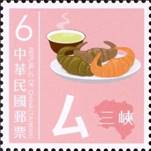Republic of
P=have O=don’t have it
The
Republic of China is a multiparty democratic state that today is composed of
the island groups of
See:
People's Republic of China
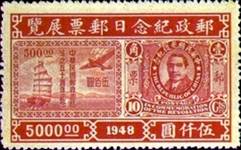
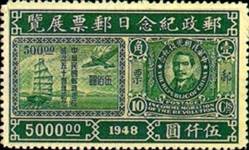
Scott: #784-5P
Issued: #784 - 20.3.1948 - Nanking
Philatelic Exhibition
Issued: #785 - 19.5.1948 - Shanghai
Philatelic Exhibition
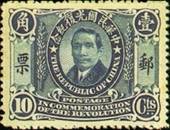 Inside
#784-5:
Inside
#784-5:
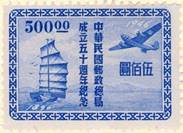 Inside
#784-5:
Inside
#784-5:
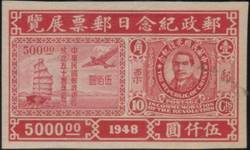
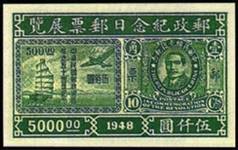
The
Directorate General of Posts held a stamp exhibition in
The
stamp design in this issue is a combination of two original stamps (1) the
In
this issue there is only one denomination, printed by the Dah Yeh Printing Co.,
At
the request of philatelists, a similar stamp exhibition was held on May 19 of
the same year in
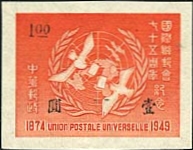
Scott: #988O
Issued: 1.8.1949
75th Anniversary, UPU
Inside #988: Stamps on Envelopes
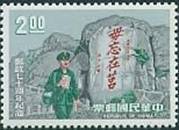
Scott: #1476O
Issued: 20.3.1966
70th
Inside #1476: Stamp on Envelope
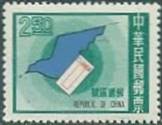
Scott: #1681O
Issued: 8.10.1970
Publicize the Postal Code System
Inside #1681: Stamp on Envelope
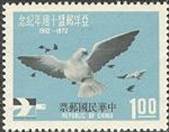
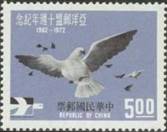
Scott: #1763-4P
Issued: 1.4.1972
10th Anniversary, Asian-Oceanic Postal

Inside #1763-4: Stamp on Envelope
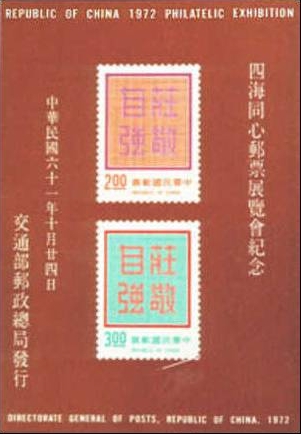
Scott: #1775P
Issued: 24.10.1972
ROCPEX '72
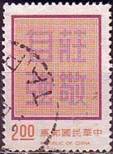 Inside #1775:
Inside #1775:
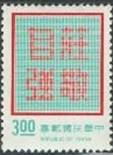 Inside #1775:
Inside #1775:
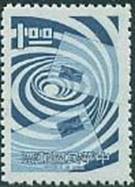
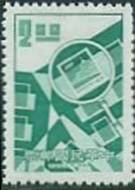
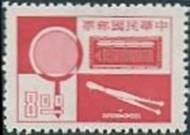
Scott: #1784-6P
Issued: 9.8.1972
Promotion of Philately
![[Chungshan Building, Yangmingshan, type OR]](China%20Taiwan_image040.jpg) Inside #1785:
Inside #1785:
Inside #1785: Stamps on Envelopes
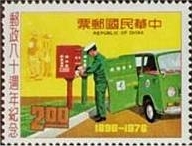
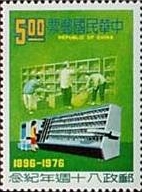
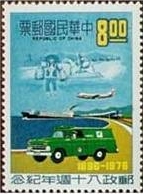
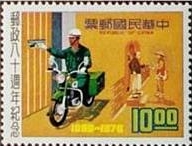
Scott: #1984-7P
Issued: 20.3.1976
80th Anniversary, Postal Service
Inside #1984, #1987: Stamp on Envelope
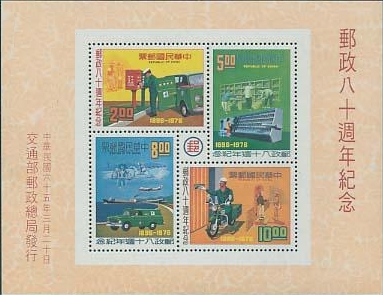
Scott: #1987aO
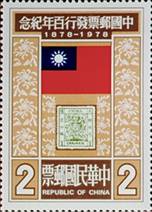
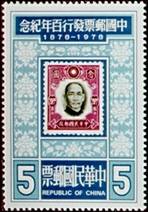
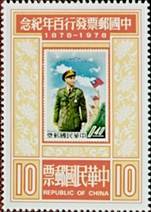
Scott: #2087-9P
Issued: 21.2.1978
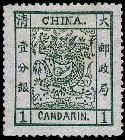 Inside #2087:
Inside #2087:
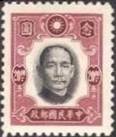 Inside #2088:
Inside #2088:
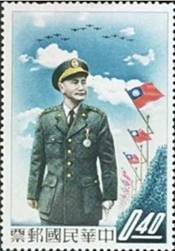 Inside #2089:
Inside #2089:
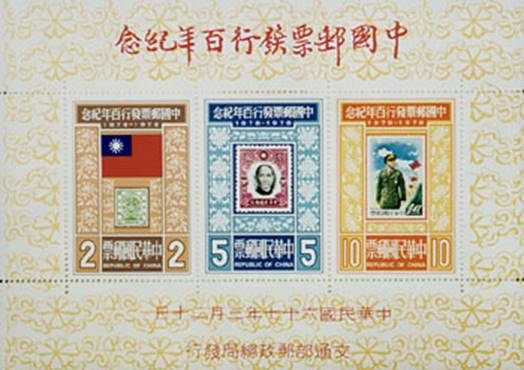
Scott: #2089aP
In 1978 Chinese postage stamps had a history of one hundred
years, beginning with the initial release of the First Customs Dragon Issue,
commonly known as "Large Dragons", in 1878. To celebrate this
significant occasion, a set of 〝Centennial of Chinese
Postage Stamps Commemorative Issue〞 was released on February
21, and a souvenir sheet (144 ×
The
stamps take as their main design three representative Chinese stamps issued in
the early, middle, and recent periods, i. e. Large Dragons, Dr. Sun Yat-sen
(New York Print), and President Chiang Kai-shek’s portrait stamps. Around the
central design is a decorative pattern. As for the souvenir sheet, three stamps
are arranged in a row.
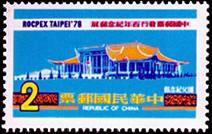
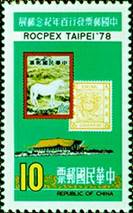
Scott: #2090-1P
Issued: 20.3.1978
ROCPEX '78
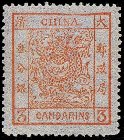 Inside #2091:
Inside #2091:
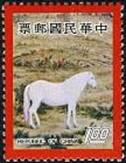 Inside #2091:
Inside #2091:
The
centennial of Chinese postage stamps fell in 1978. To commemorate this
significant postal event, to advance friendship and goodwill among the people
of the world, and to promote philatelic activities, the 1978 Philatelic
Exhibition Commemorating the Centennial of China’s First Stamps (ROCPEX TAIPEI
’78) took place from March 20 to 29, 1978. The Exhibition was organized jointly
by the Dr. Sun Yat-sen Memorial Hall and this Directorate. In conjunction with
the Exhibition, an issue of stamps was released on March 20, 1978, the Postal
Day-also the opening day of ROCPEX TAIPEI ’78.
The
2.00 stamp depicts the site of the Exhibition-Dr. Sun Yat-sen Memorial Hall.
The 10.00 stamp has as its main design two prior stamps, one each of the Large
Dragon Issue and the New Year’s Greeting Stamp of 1977 (a painting of horses),
symbolizing the energetic spirit of dragons and horses.
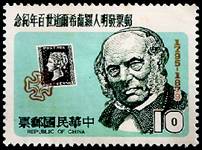
Scott: #2166P
Issued: 27.8.1979
Death Centenary of Sir Rowland Hill
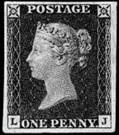 Inside #2166:
G.B. #1 [F-E]
Inside #2166:
G.B. #1 [F-E]
Visit: The Penny Black Plate project http://www.arcieriminerva.it/SOS/homeSOS.htm
Sir
Rowland Hill (1795-1879), an Englishman, was born poor. Aggressive and
inventive, he succeeded in life by self`study. He invented the world’s first
postage stamp "Black Penny" and was thus honorably called 〝the father of the
postage stamp.〞
Furthermore, he suggested "prepaid postage" and "uniform rate of
postage" systems. Although he took charge of the British Post for only ten
years (1854-1864), Sir Rowland Hill made significant contributions by
introducing his system and improving the efficiency of the post office. Proven
immensely successful, his many plans were widely imitated by countries the
world over. Consequently, he was honored by the Universal Postal Union as one
of the greatest men in the world.
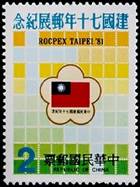
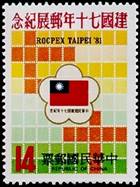
Scott: #2270-1O
Issued: 25.10.1981
ROCPEX '81
Inside #2270-1: Pseudo Stamp
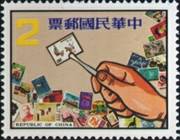
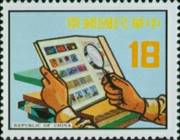
Scott: #2330-1O
Issued: 9.8.1982
Promotion of Philately
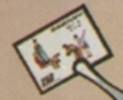
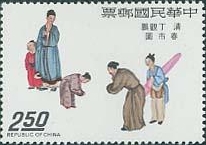 Inside #2330:
Inside #2330:

Inside #2330:
|
|
|
|
|
|
|
|
|
|
|
|
|
|
|
|
|
|
|
|
|
|
|
|
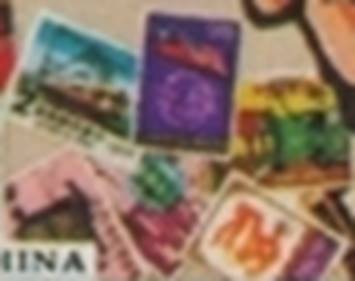
Inside #2330:
|
|
|
|
|
|
|
|
|
|
|
|
|
|
|
|

Inside #2330:
|
|
|
|
|
|
|
|
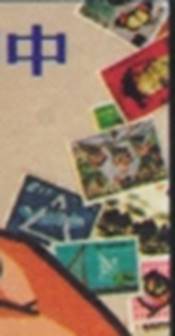
Inside #2330:
|
|
|
|
|
|
|
|
|
|
|
(Thanks to Attilio Papio) |
|
|
|
|
|
|
|
|
|
|
|
|

Inside #2331:
|
|
|
|
||
|
|
|
|
||
|
|
||||
|
Inside #2331: |
||||
|
|
|
|
||
|
|
|
|
||
|
|
|
|
|
|
|
|
|
|
|
|
|
|
|
|
|
|
|
|
||||
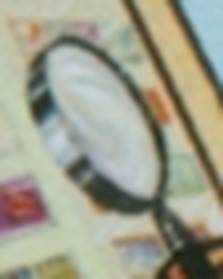
Inside #2331: Other TBI
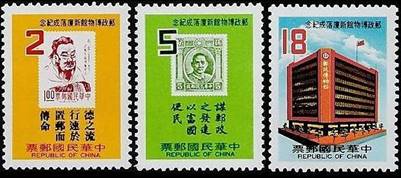
Scott: #2434-6P
Issued: 10.10.1984
Postal Museum Opening
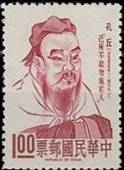 Inside #2434:
Inside #2434:
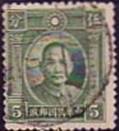 Inside #2435:
Inside #2435:
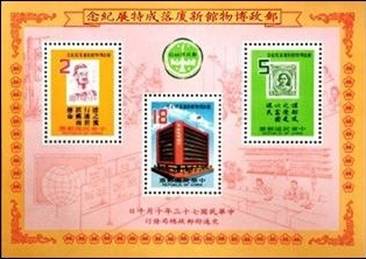
Scott: #2436aO
To
cultivate interest in visiting the new
The
2.00 stamp bears a former stamp of Confucius and his saying "The flowing
progress of virtue is more rapid than the transmission of imperial orders by
postal stages and couriers" which is believed to be the earliest reference
to a postal service.
The
5.00 stamp features a previous stamp of Dr. Sun Yat-sen and his remark
"Develop postal service to benefit the people and the country".
The
18.00 stamp depicts the exterior of the new
In
an attempt to promote business development and to help the public gain better
knowledge in the field of post, the
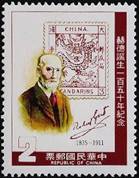
Scott: #2449P
Issued: 15.2.1985
150th Birth Anniversary of Sir Robert
Hart
 Inside #2449:
Inside #2449:
The Forerunner - Sir Robert Hart http://filatelist.tripod.com/forerunner.html
After
the Second Opium War (1856-1860), under the "Treaty of Tientsin" the
diplomatic envoys and attaches of Britain, France, Russia, US and other
countries were entitled the rights of free travel and running postal service in
Chinese territory, and the Chinese government was responsible for their safety.
At that time, foreign envoys in China asked the Chinese government’s Tsungli
Yamen (Office of Foreign Affairs) to run postal service on their behalf and
Tsungli Yamen assigned ICHAN (the government operated courier stations) to
deliver mails for the envoys between Shanghai and Peking.
In
1861 Sir Robert Hart, then the Acting Inspector General of the Chinese Imperial
Maritime Customs who had the ambition to organize a modern national postal
system in China emulating that of the Westerns, suggested to Tsungli Yamen that
it would be to China's advantage that a national post office be founded. But
Tsungli Yamen turned it down because it would have brought him into conflict
with some powerful private vested interests. In 1866, the handling of mails of
foreign envoys was reassigned to the Customs. Inspector General of Customs
Robert Hart accepted to undertake the duty and set up the "Customs Postal
Department" to handle mail delivery. Initially the Customs postal service
handled only official documents and private letters for its staff and family members.
Since 1866, it began to accept and distribute legation mail pouches. From 1867,
it began to accept mail articles from foreign residents to be transmitted by
Tientsin-Shanghai steamers. And in 1868, the Tientsin Customs began to accept
closed mail from the Tientsin community to be transmitted to
On
March 9, 1878, Robert Hart entrusted Gustav Detring, then Commissioner of
Customs -
In
1892, Robert Hart suggested to Tsungli Yamen to establish a national post
office again, and later in 1895 made a 4 chapter, 44 articles of Postal Guide
for the modern postal service. In 1896 Robert Hart succeeded in founding the
Imperial Post Office and appointed the Inspector General of Posts. Money came
from Customs Funds. The innumerable rules, regulations and problems that had to
be overcome were legion. He paid attention to every possible matter from
opening a new department to the design of a postage stamp.
From
1878 when the Customs Post set up to 1896 when the Imperial Post was
established, modern Post of China had experienced many vicissitudes. The number
of post offices increased from the original 5 to 24 offices, covered almost all
places there were customs houses. A new modern postal system finally held its
ground, and laid down foundation for the development of
See
also: Founder of Modern Post of

Scott: #3052-5O
Issued: 20.3.1996
Chinese Postal Service Centenary
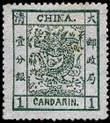 Inside #3052-5a:
Inside #3052-5a:
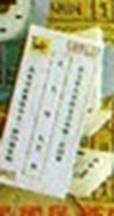

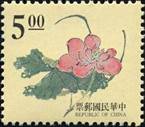 Inside #3053 (Stamp on envelope):
Inside #3053 (Stamp on envelope):
(Thanks
to Lou)
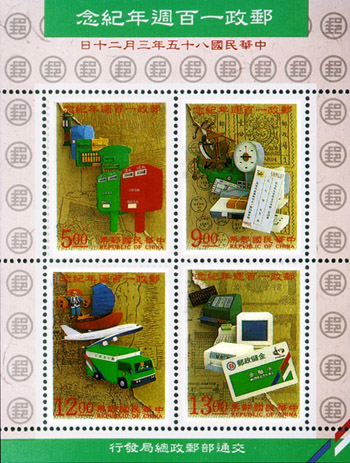
Scott: #3055aP
The
Chinese Postal Service (CPS) was opened to the general public in 1896, and on
March 20, 1996 it reached its 100th anniversary. To celebrate this historically
significant event, this Directorate issued a set of four stamps depicting
mailboxes, measurement instruments. mail carriers, and
weighing instruments. A souvenir sheet (78×102mm) consisting of the four stamps
was also issued. The design of these stamps is the winning entry from Arthur
Lee in a stamp design competition held for this special event.
The
years from March 20, 1896 (Kwang Hsu the 22nd Year. February 7th),
when the CPS was formed, to 1911, when the Republic of China was founded. Form
an important period during which the Chinese Postal Service not only laid a
solid foundation for the postal services, but also paved the way for the future
stable development of the industry. In the period from early 1911 to the Sino
Japanese War, the CPS continued to grow in spite of the fact that the existence
of the nation was in danger. After the national government moved to
In
recent years, due to the rapid growth of the national economy and drastic
changes in the
social structure, the operating conditions for CPS are not the same as they
were before. The traditional dominance held in the past is threatened by such
serious challenges as the advance of new technology in tele-communications, the
rise of the private mail delivery companies, and keen competition in the
insurance and banking sectors. To keep pace with society, the CPS is now, under
the new image of reliance, warmth, efficiency, and innovation, very active in
changing its ways to operation, re-setting its management system, accelerating
its automation process, and upgrading its quality of service.
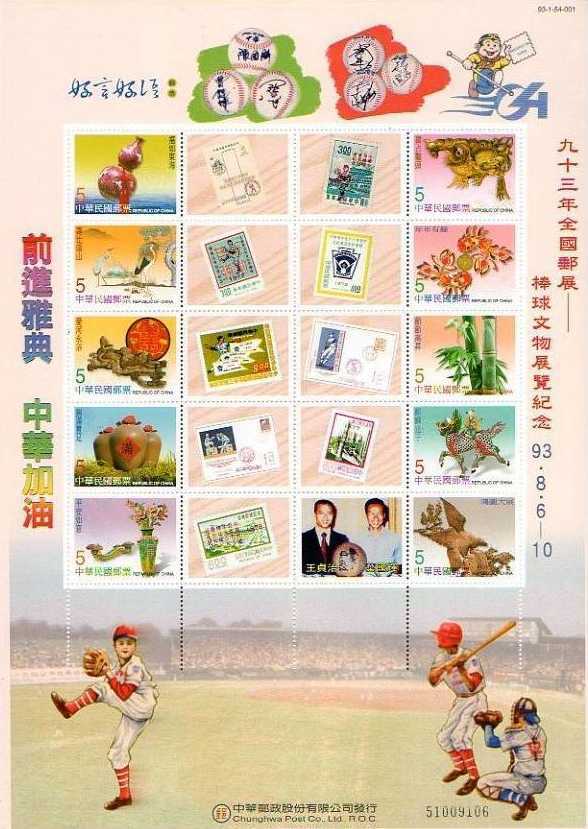
Scott: #3507vO
Issued: 30.5.2004
Greetings
Inside #3507v (On tabs): TBI
No. 3507v sold for $150 and has labels
which could be personalized,
that are separated from the stamps by simulated perforations
Thanks to Prof. Plinio Richelmi

Scott: #3883O
Issued: 7.8.2009
Modern Taiwanese Painting
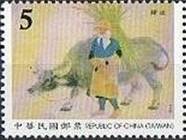 Inside #3883 (On Label):
Inside #3883 (On Label):
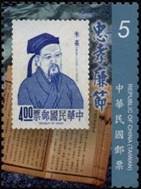
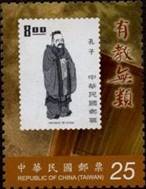
Scott: #3955-6O
Issued: 28.9.2010
Great Chinese Educators
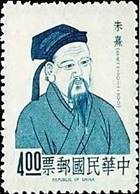 Inside #3955:
Inside #3955:
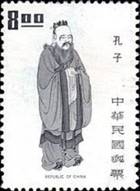 Inside #3956:
Inside #3956:
Thanks to Prof. Plinio Richelmi and Lou Guadagno
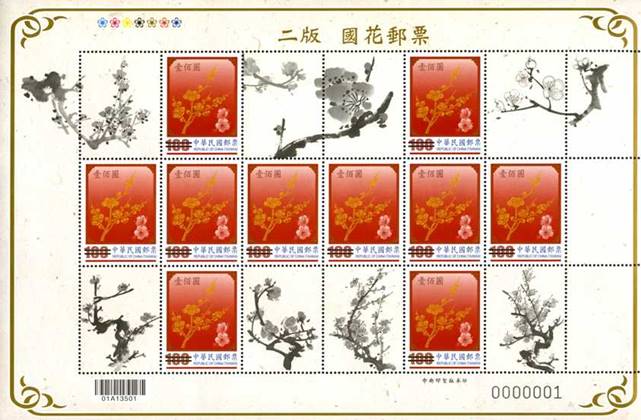
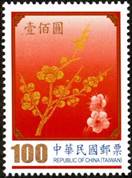
Scott: #4013O
Issued: 10.10.2011
100th anniversary of the Republic of
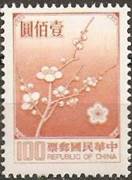 Inside #4013:
Inside #4013:
Thanks to Mike Knopfler
To
mark the 100th anniversary of the Republic of China, Chunghwa Post is issuing a
2nd print of a single “National Flower Postage Stamp” with a denomination of
NT$100 on October 10, 2011, ROC’s national day. The design of the stamp
follows:
Printed
in intaglio combined with offset, this high face value stamp incorporates
several different printing techniques. The two blooming plum blossoms on the
lower right corner and the frames of the stamp are printed in offset, while the
plum blossoms and the branches in the center as well as the stamp’s
denomination are printed in intaglio. The plum blossoms, branches and the line
frame are printed in gold; and the denomination is, for the first time in
Chunghwa Post’s history, printed with variable ink which is for
anti-counterfeiting and normally used on banknotes.
Lou
Guadagno wrote: To me, this item is not even remotely a SOS issue, not a design
component by my definition, and not even a hated Type B. Just because a
design is used again, does not make it a SOS, there has to be a tie-in to the
older issue, such as a stamp anniversary or exhibition. There are
hundreds of designs, especially those of definitives that are used again in
different forms that have never been considered as SOS. The new stamp is based
on the 1979 Plum Blossom design, but the branch and value are now gold and now
there are two real blossoms instead of a symbolic one at the bottom
right. Also, the Chinese inscription in the upper left is different. The
official
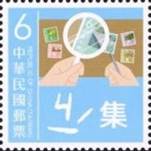
Scott: #4726h
Issued: 27.03.2024
Mandarin Phonetic Symbols
Inside 4276h:
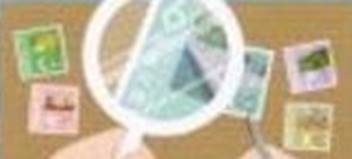
|
China-Taiwan #4726j |
China-Taiwan #4726a |
China-Taiwan #4720g |
|
China-Taiwan #4720a |
China-Taiwan #4720c |
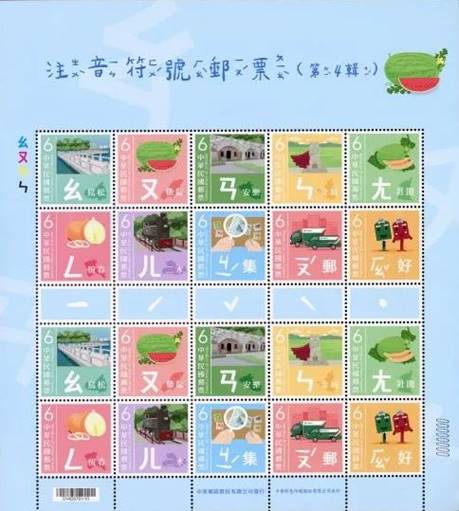
Scott: #4726
Thanks to Lou Guadagno and Zoltán Komlóssy
Best website
related:

![]()
http://www.post.gov.tw/post/internet/u_english/index.jsp

http://www.post.gov.tw/post/internet/w_stamphouse/stamphouse_eng.htm
POSTAL HISTORY OF IMPERIAL
http://filatelist.tripod.com/phcindex.html
Stamps of
http://www.stampsofchina.com/asp/stamplinks.asp
Postage stamps and postal
history of
http://en.wikipedia.org/wiki/Postage_stamps_and_postal_history_of_China
Stamps of
http://www.jdol.cn.net/stamps/
![]()
Scott2007
Wish List
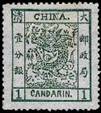
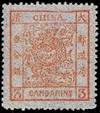
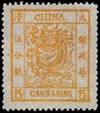
China (ROC) #1-3 Saint Vincent
– Grenadines, Saint Vincent Grenadines – Canouan

China (ROC) #183
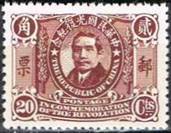
China (ROC) #185 for Macao
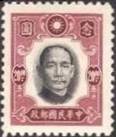
China #464
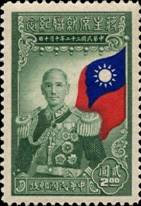
China #605
for Guinea

China #988
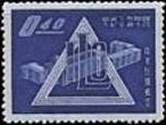
China-Taiwan #1228
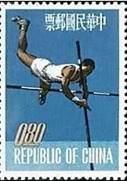
China-Taiwan #1361
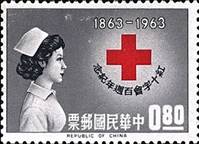
China-Taiwan #1375 for Central Africa
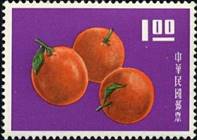
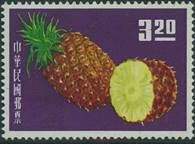
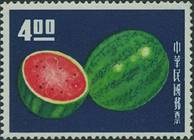
China #1415-7
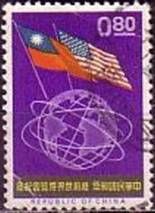
China #1420

China #1458
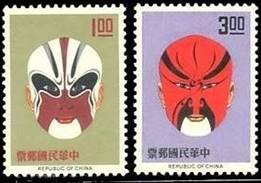
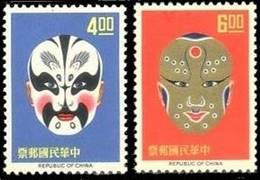
China #1471-4
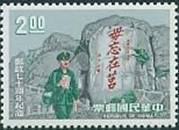
China #1476
![[Chungshan Building, Yangmingshan, type OR]](China%20Taiwan_image040.jpg)
China #1546
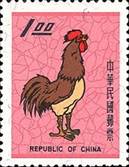
China-Taiwan #1588 for Guinea Bissau
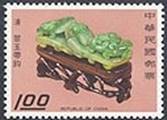
China #1592
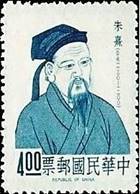
China (ROC) #1647
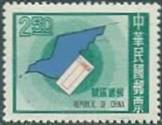
China #1681
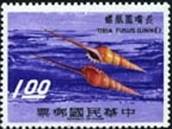
China #1698
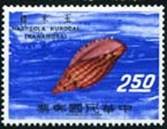
China #1699

China #1701

China #1769
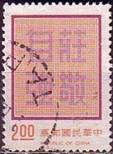
China #1771
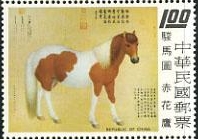
China #1859
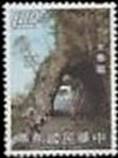
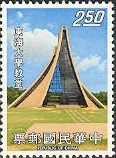
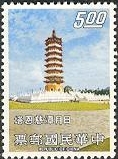
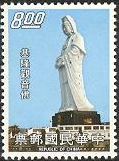
China #1871-4
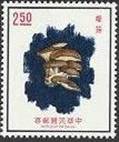
China #1917

China #1927
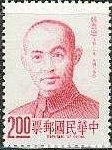
China #1954
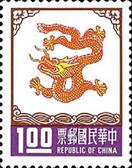
China-Taiwan #1968 + for Guinea Bissau
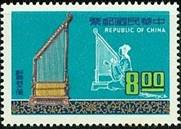
China #1977

China #1987a
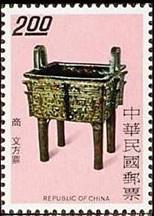
China #2005

China #2037
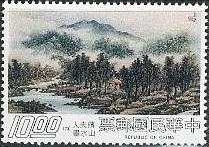
China #2041
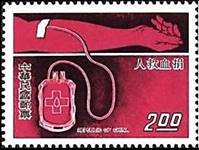
China #2044
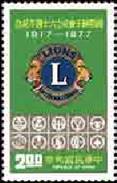
China #2062
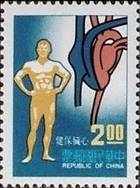
China #2077

China #2079

China #2081

China-Taiwan
#2114

China-Taiwan
#2135 for Guinea Bissau
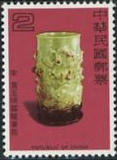
China-Taiwan
#2149
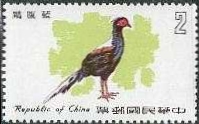
China-Taiwan
#2163


China-Taiwan
#2270-1


China-Taiwan
#2330-1

China-Taiwan
#2436a

China #2990

China-Taiwan
#3052-5

China-Taiwan
#3507v

China-Taiwan
#3883


China-Taiwan
#3955-6

China-Taiwan
#4013

China-Taiwan #4053
for Uganda

Scott: #????

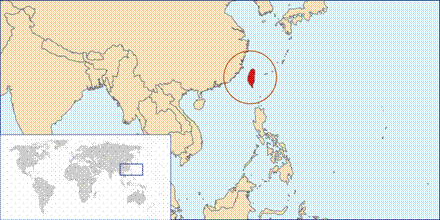
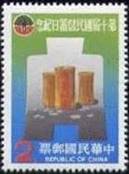
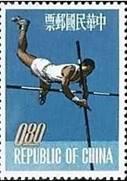
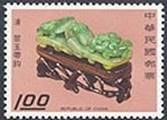
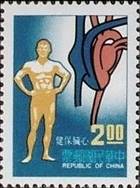
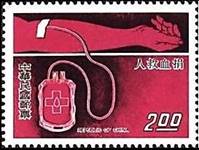
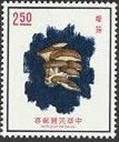
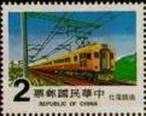
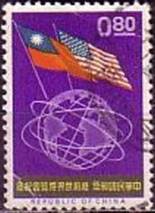
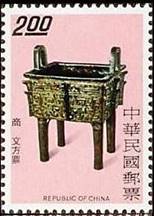
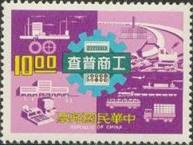
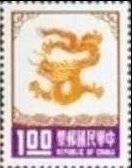
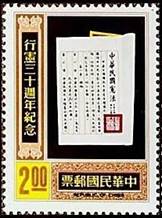

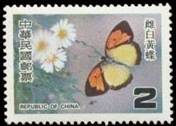
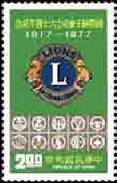
![[Children's Day - Children's Drawings, Scrivi AIW]](China%20Taiwan_image122.jpg)
